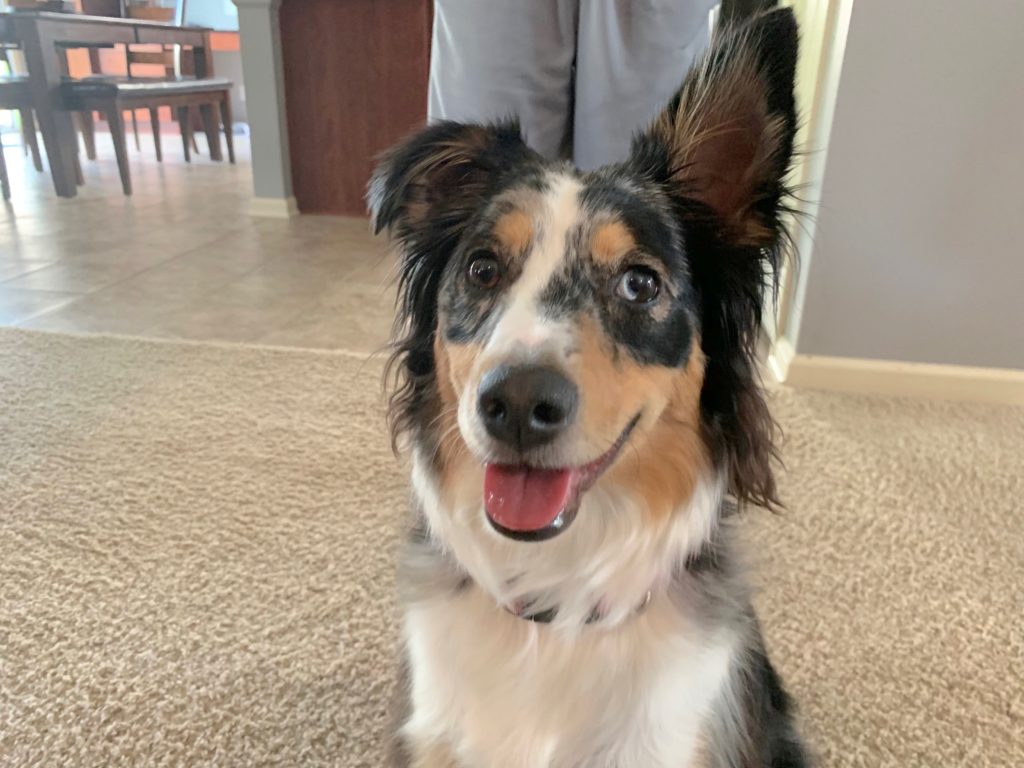Helping a Anxious Mini Australian Shepherd Get Over Her Fear of Strangers
By: David Codr
Published Date: June 22, 2019
For this Omaha dog training session we helped Emma a nervous 1 year-old Mini Aussie get over her fear of new people visiting her home.
When you are helping a dog get over a fear of new people, what the people don’t do can be almost as important as what they do. I tried to ignore Emma; avoiding eye contact, not trying to pet her or talk to her. Many of us think the best way to help a fearful dog is to pet them or be nice, but giving them space and letting them come to you in their own time is usually the best plan.
After Emma settled down, I used a few dog behaviorist tricks to help her learn that strangers aren’t anything to be afraid of. I used lots of positive reinforcement and let Emma do the heavy lifting.
To help the guardians remember this strategy to help a nervous dog get over a fear of new people, I pulled out my phone and had the family record me.
By helping Emma with some tasty motivation and letting her approach me on her own schedule let her gain confidence. As we practiced, she came closer and closer, eventually sniffing me then finally taking a treat from my hand. The great way about this way of helping an anxious dog is the dog learns on its own instead of us trying to micro manage them. This means you dont have to be a professional Mini Australian Shepherd dog trainer to use this positive dog training approach.
It can be frustrating trying to help a fearful dog get over its anxiety around strangers, but if the guardians practice this method a few times and day and the visitors watch the free dog training video above, she should start to get over her fear of new people.
I shared a number of other tips in this in home Omaha dog behavior training session so we filmed a roadmap to success video to help the family remember them all.
Categorized in: Dog Behavior


